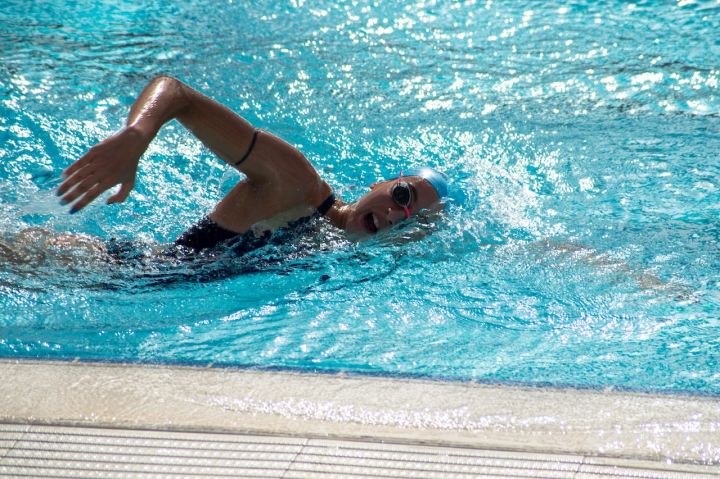Those who love swimming know that swimming positions include freestyle, backstroke, butterfly and breaststroke. The other 3 swimming positions do not have the horizontal water clamping action, only breaststroke needs this action, so we should pay special attention to the correct use of this action to avoid knee injuries when we perform breaststroke exercise.

tip 1: Master the correct way of swimming with the horizontal pinch
in swimming, the inward clamping of the legs and the stirrups is a continuous and complete action, but in a different order, each time you do this action, the stirrups are in front and the clamping of the water is behind. In the movement the thighs are forced while the hips are extended outwards, the feet are turned backwards, the knees are turned inwards to keep the lower legs perpendicular to the water, then the feet are stirred backwards while the legs are clamped inwards laterally to move the body forward. The main points of the movement are: Keep the body parallel and prone in the water, do the decomposition of the legs in the water to collect, turn, stomp and clip the movement practice, to make the thighs force, the movement starts from slow to fast, stomp the water when the speed should be fast, in the process of movement to carefully experience the technical elements of the thighs, calves and ankles.

tip 2: Do warm-up exercises when practising breaststroke
before going into the water, strengthen the practice of leg flexibility, the flexibility of the knee joint is improved and it is able to adapt to large movements, enhancing the strength of its activity and avoiding injuries to the knee joint.
Tip 3: Reduce the number of water clips to relieve knee fatigue
breaststroke is a water-skiing enjoyable stroke, the movement does not emphasise speed, because it can produce a large gliding distance during the movement, so swimmers do not have to carry out fast-paced stirring action, by the long water-skiing inertia, they can reach the end of the line, reducing the number of water clamping, the number of knee joint wear and tear will also be reduced.

tip 4: Build muscle strength for short distance swimming
we usually have to strengthen our muscle strength training, so that our muscles become developed and our muscle strength is enhanced, so that in swimming the muscles bear part of the water pressure, so that the pressure on the knee joint becomes smaller, on the basis of carrying out short distance swimming, so that our knee joint is not fatigued.
Secret 5: Learn hard and ask your coach if you don't understand
breaststroke looks simple, but the technical content of the action is extremely high. When we train for breaststroke, we should master the technical elements of each action, if we don't master it well, we should not practice blindly by ourselves, we should communicate with the coach diligently and correct our incorrect action in time, don't wait for the action to take shape, then it will be too late to change, the wrong action will bring more damage to the knee.

although swimming is good for our knee joints, there are two sides to the problem. As long as we start from the right direction and master the above 5 tips, the bad side will turn out to be good for us.

